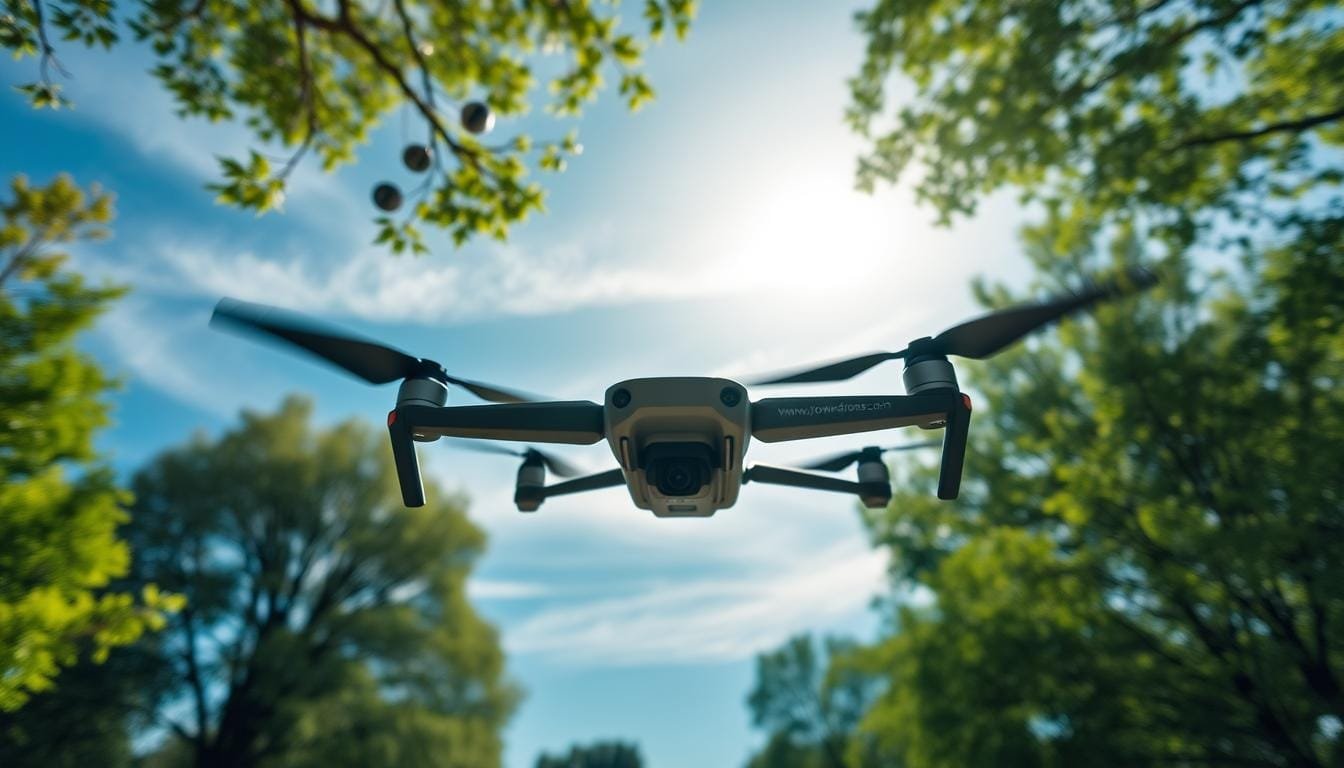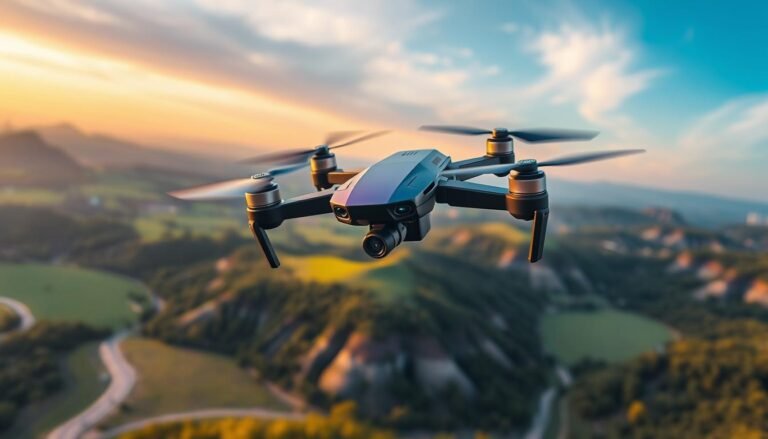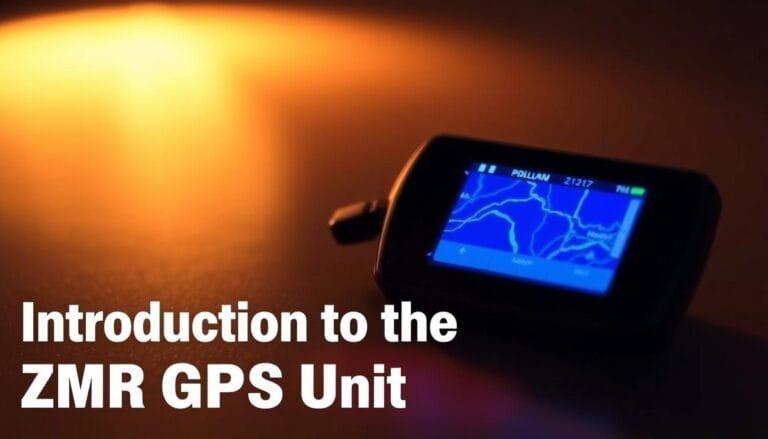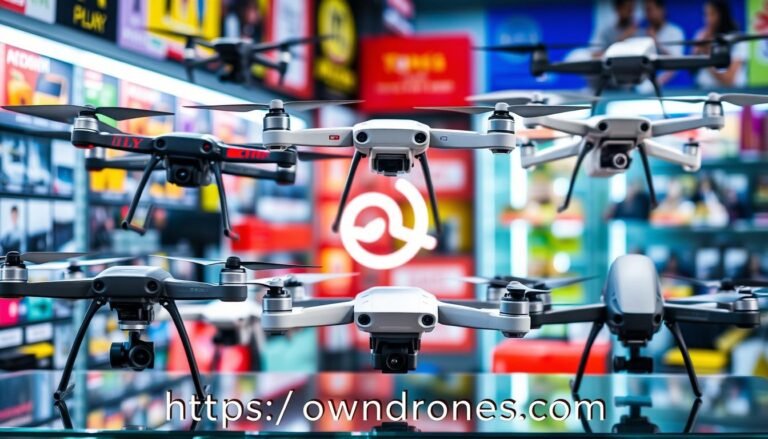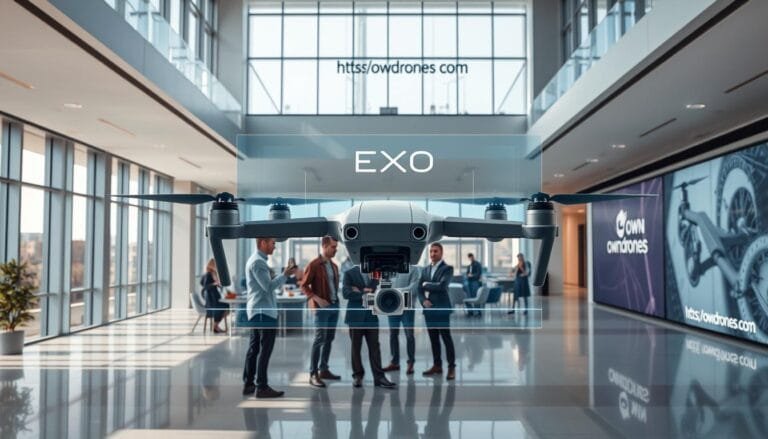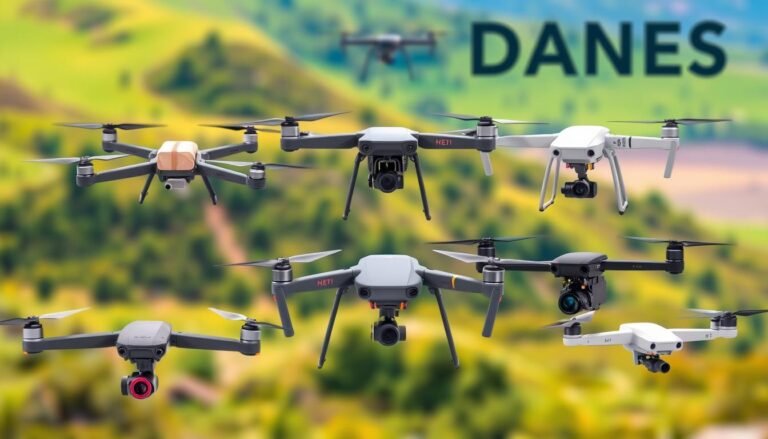Parks Where You Can Fly Drones | Come Back for Updates – OwnDrones.com
Did you know that over 1.7 million drones are registered in the United States? With so many people taking to the skies, finding the right place to fly your drone is crucial. Whether you’re a recreational enthusiast or a commercial pilot, knowing where you can safely and legally operate your drone is essential.
This article dives into the best parks for drone flying, offering detailed insights into FAA guidelines, local rules, and expert tips. Staying updated on these regulations ensures you can enjoy your hobby or profession without running into legal issues. OwnDrones.com is your go-to resource for the latest information on drone-friendly locations and airspace rules.
From Tampa’s top parks to nationwide hotspots, we cover it all. We also explore how technology, like airspace apps, can enhance your flying experience. Whether you’re looking for a scenic spot or need to comply with specific laws, this guide has you covered. Make sure to bookmark OwnDrones.com for frequent updates and new content.
Key Takeaways
- Discover the best parks for drone flying across the U.S.
- Stay informed about FAA and local drone regulations.
- Learn how to use airspace apps for safer flights.
- Get expert advice for both recreational and commercial drone pilots.
- Find out about Tampa’s top drone-friendly parks.
- Ensure compliance with the latest drone laws and guidelines.
- Bookmark OwnDrones.com for regular updates.
Introduction
Exploring parks with a drone offers a unique perspective on nature and urban landscapes. Whether you’re a recreational pilot or a commercial drone operator, parks provide an ideal setting for aerial adventures. However, understanding the rules and regulations is essential to ensure a safe and legal flight.
Overview of Drone Flying in Parks
Drone flying in parks has gained popularity due to the scenic views and open spaces. However, pilots must adhere to both federal and local regulations. The FAA requires recreational flyers to maintain a visual line of sight and stay below 400 feet. Additionally, many states have specific laws, such as restrictions on capturing images of private property without consent.
Using tools like the B4UFLY app can help pilots stay informed about airspace restrictions. This ensures compliance with drone law and reduces the risk of legal issues. Always check local guidelines before flying, as rules can vary significantly from one park to another.
Why Visit OwnDrones.com for Updates?
OwnDrones.com is a centralized resource for the latest information on drone-friendly locations and regulations. The site covers everything from FAA guidelines to state-specific laws, making it easier for pilots to stay informed. Regular updates ensure you have the most accurate and current information at your fingertips.
By relying on OwnDrones.com, you can reduce the risks associated with regulatory changes. Whether you’re flying for fun or work, staying updated is crucial. Bookmark the site and revisit it frequently for new content and insights.
Understanding “parks-where-you-can-fly-drones”
Drone-friendly parks provide the perfect environment for pilots to hone their skills. These areas are designated for safe and legal drone operations, ensuring compliance with FAA rules and local regulations. Whether you’re a recreational flyer or a commercial operator, understanding what makes a park drone-friendly is essential.

Defining Drone-Friendly Park Zones
A drone-friendly park typically has open spaces, regulated airspace, and clear guidelines for pilots. These zones are often free from obstacles, making them ideal for both beginners and experienced operators. The FAA requires pilots to maintain a visual line of sight and stay below 400 feet in these areas.
Local laws also play a significant role. Some parks may restrict drone use near wildlife or private property. Always check for specific rules before flying. Tools like the B4UFLY app can help you stay informed about airspace restrictions and ensure compliance with drone law.
Key Benefits for Drone Pilots
Drone-friendly parks offer numerous advantages. Wide-open areas provide ample space for practice and creativity. Regulated airspace ensures safety for both drones and other aircraft. These parks also often have designated flying zones, reducing the risk of conflicts with pedestrians or wildlife.
For recreational pilots, these parks are a great place to enjoy their hobby. Commercial operators benefit from the structured environment, which helps them meet regulatory requirements. Whether you’re flying for fun or work, drone-friendly parks make the process smoother and more enjoyable.
Stay updated on the latest drone-friendly locations by visiting OwnDrones.com. Whether you’re looking for a new spot or need to comply with changing rules, we’ve got you covered.
Top US Drone-Friendly Parks
Finding the perfect spot to fly your drone can elevate your aerial photography game. Across the U.S., several parks stand out for their drone-friendly policies and stunning views. These locations offer open spaces, clear airspace, and unique perspectives for both recreational and professional pilots.
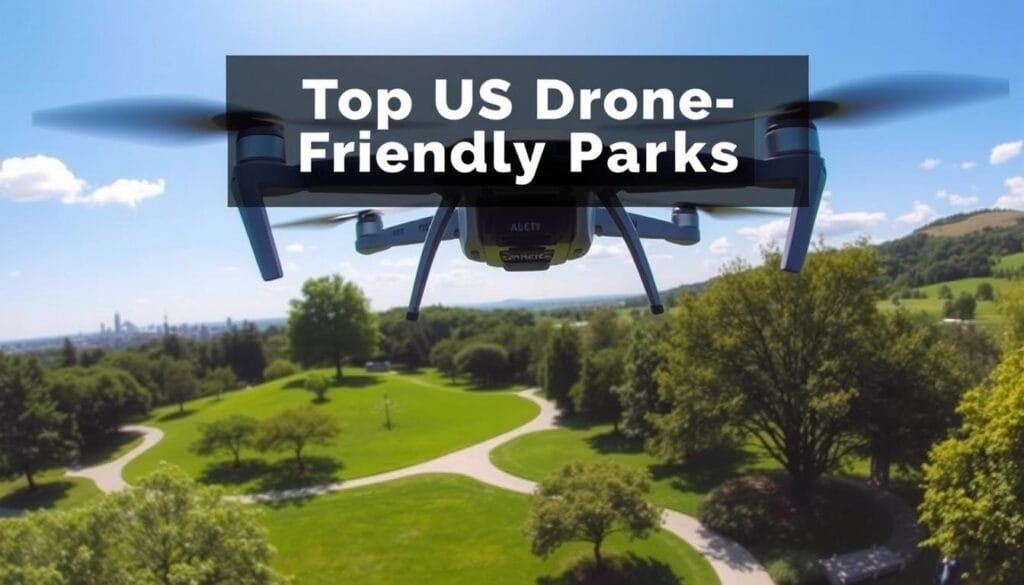
Mango Recreation Center – A Tampa Highlight
Mango Recreation Center in Tampa is a top choice for drone enthusiasts. It features a designated drone zone, ensuring a safe and legal place to fly. The area is free from obstacles, making it ideal for beginners and experienced pilots alike. With its open space, you can practice maneuvers or capture stunning aerial footage.
Plant Park at the University of Tampa
Plant Park offers picturesque views of the Hillsborough River and the University of Tampa campus. This spot is perfect for photographers looking to capture scenic landscapes. However, pilots should check for any restrictions or prior permissions required before flying. The park’s beauty makes it a must-visit for drone enthusiasts.
Desoto Park and More Scenic Locations
Desoto Park provides unique vantage points for capturing McKay Bay. Its waterfront location offers breathtaking views, ideal for aerial photography. Additionally, locations like Area 52 and Sunset Park are worth exploring. These areas have specific airspace classifications, so always verify guidelines before flying.
- Mango Recreation Center: Designated drone zone, open space, beginner-friendly.
- Plant Park: Scenic views of the Hillsborough River, check for restrictions.
- Desoto Park: Waterfront location, perfect for capturing McKay Bay.
- Area 52 and Sunset Park: Unique airspace classifications, verify guidelines.
For the latest information on drone-friendly parks, visit OwnDrones.com. Staying updated ensures you have the best spots and comply with all regulations. Whether you’re a beginner or an expert, these parks offer the perfect place to fly your drone and capture unforgettable views.
Essential Drone Regulations for Park Flights
Understanding drone regulations is crucial for safe and legal flights in parks. Whether you’re flying for fun or work, knowing the rules helps avoid fines and ensures safety. The FAA has specific requirements for both recreational and commercial drone operations.
Federal FAA Requirements
Recreational drone pilots must pass the TRUST test, which takes about 10-30 minutes and is free. They must also keep their drone below 400 feet and avoid flying over people or moving vehicles. For commercial pilots, obtaining a Part 107 certification is mandatory. This involves a $175 test and requires recurrent training every 24 months.
Drones weighing over 0.55 pounds must be registered with the FAA. This applies to both recreational and commercial use. Flying near airports requires prior authorization, especially in controlled airspace like Class B, C, or D. Always check for flight restrictions using apps like Airspace Link or UASidekick.
Basic Safety and Operational Guidelines
Safety is paramount when flying drones in parks. Always maintain a visual line of sight and avoid interfering with other aircraft. Drones should not be flown in national parks without explicit permission. Temporary Flight Restrictions (TFRs) can also ground drones during events like wildfires or VIP travel.
Here’s a quick summary of FAA requirements for recreational and commercial drone flights:
| Requirement | Recreational | Commercial |
|---|---|---|
| Test/Certification | TRUST Test | Part 107 Certification |
| Cost | Free | $175 |
| Maximum Altitude | 400 feet | 400 feet |
| Registration | Required for drones >0.55 lbs | Required for drones >0.55 lbs |
| Airspace Authorization | Required near airports | Required near airports |
For the latest updates on drone regulations, visit OwnDrones.com. Staying informed ensures you can enjoy your flights while complying with all rules. Whether you’re buying drones or flying them, OwnDrones.com is your go-to resource.
Navigating Local and FAA Drone Laws
Navigating drone laws can be tricky, especially when federal and local rules clash. While the FAA sets the baseline for drone operations, local governments often add their own restrictions. Understanding these differences is crucial for pilots to avoid fines and ensure safe flights.
Differences Between Recreational and Commercial Flying
Recreational and commercial drone flying are governed by different rules. Recreational pilots must pass the TRUST test and follow safety guidelines from FAA-recognized organizations. They must keep their drone below 400 feet and avoid flying over people or moving vehicles.
Commercial pilots, on the other hand, need a Part 107 certification. This involves passing a $175 test and completing recurrent training every 24 months. Both types of pilots must register drones weighing over 0.55 pounds with the FAA.
How Local Ordinances Can Affect Your Flight
Local laws can sometimes override federal permissions. For example, some cities prohibit drone flights in public parks or near schools, even if the FAA allows it. Temporary Flight Restrictions (TFRs) can also ground drones during events like wildfires or VIP travel.
Here’s a step-by-step process to check both FAA and local restrictions:
- Use apps like B4UFLY or Airspace Link to verify airspace classifications.
- Check for local ordinances on the city or county website.
- Look for TFRs in your area using the FAA’s official resources.
| Aspect | Recreational | Commercial |
|---|---|---|
| Certification | TRUST Test | Part 107 Certification |
| Cost | Free | $175 |
| Maximum Altitude | 400 feet | 400 feet |
| Registration | Required for drones >0.55 lbs | Required for drones >0.55 lbs |
| Airspace Authorization | Required near airports | Required near airports |
For the latest updates on drone laws, visit OwnDrones.com. Staying informed ensures you can enjoy your flights while complying with all rules. Whether you’re flying for fun or work, OwnDrones.com is your go-to resource for navigating these legal complexities.
Expert Tips and Resources for Drone Pilots
Mastering drone flight requires the right tools, training, and up-to-date information. Whether you’re a beginner or an experienced pilot, leveraging resources like airspace apps and certification courses can significantly enhance your skills and ensure compliance with drone law.
Using Airspace Apps and Real-Time Data
Airspace apps like Aloft, Autopylot, and B4UFLY provide real-time data on flight restrictions and airspace classifications. These tools are essential for staying compliant with FAA regulations and avoiding fines. For example, the B4UFLY app offers a clear view of no-fly zones and temporary flight restrictions (TFRs).
Here’s a quick comparison of popular airspace apps:
| App | Key Features | Best For |
|---|---|---|
| Aloft | LAANC approvals, airspace maps | Commercial pilots |
| Autopylot | Flight planning, weather data | Recreational flyers |
| B4UFLY | No-fly zones, TFR alerts | All pilots |
Drone Flight Training and Certifications
Proper training is crucial for safe and effective drone operations. Online courses like Drone Pilot Ground School offer comprehensive training for both recreational and commercial pilots. These programs cover everything from basic flight skills to advanced Part 107 certification requirements.
Here are some key benefits of professional training:
- Improved safety and technical skills
- Better understanding of FAA regulations
- Higher success rates in certification exams
“Investing in training not only makes you a better pilot but also ensures you’re operating within the law.”
For the latest tips and resources, visit OwnDrones.com. Staying informed helps you navigate the ever-changing landscape of drone regulation and enhances your flying experience. Whether you’re looking for affordable drones or expert advice, OwnDrones.com has you covered.
Conclusion
Flying drones in parks offers a unique way to capture stunning views and enjoy open spaces. However, staying informed about drone law and flight restrictions is essential for every drone pilot. Whether you’re flying at Mango Recreation Center or Plant Park, always check local and FAA guidelines to ensure compliance.
Using tools like airspace apps can simplify the process of identifying safe zones. Regular updates on drone law and park-specific rules are crucial to avoid legal issues. Revisiting OwnDrones.com ensures you have the latest information at your fingertips.
Safety and strategy are key to a successful flight. By following expert tips and leveraging resources, you can enhance your skills and enjoy the hobby responsibly. Stay updated, fly safely, and keep exploring the skies!
